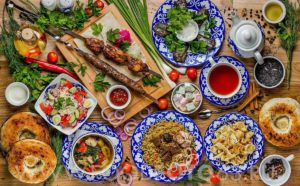
Steppejourneys
- Required plugin "Meks Easy Photo Feed Widget" is required. Please install the plugin here. or read more detailed instruction about How to setup the plugin here
Connect to Us
-
Steppejourneys
-
Uzbekistan’s cuisine is a vibrant tapestry of flavors and traditions, reflecting its rich history and the confluence of cultures along the ancient Silk Road. Renowned for its hearty and flavorful dishes, Uzbek food is a celebration of the country’s agricultural […]
A trip to Central Asia is incomplete without a visit to the ancient cities of Bukhara and Samarkand in Uzbekistan. These cities are not just destinations; they are vibrant tapestries woven with the threads of history, culture, and architecture that […]
Uzbekistan, a country renowned for its rich history, stunning architecture, and vibrant culture, is increasingly becoming a sought-after destination for travelers from around the world. Nestled in the heart of Central Asia, it offers a unique blend of ancient cities […]
In the vast, vibrant expanse of Central Asia, the choice of a travel partner can transform a simple trip into a journey of a lifetime. Steppe Journeys, based in Tashkent, Uzbekistan, stands out as a beacon of excellence in the […]
Samarkand: The Jewel of the Silk Road Samarkand, located in modern-day Uzbekistan, is one of the oldest continuously inhabited cities in Central Asia and a crossroads of world cultures. Known as the “Jewel of the Silk Road,” it has been […]
Uzbekistan, a gem in the heart of Central Asia, offers a unique blend of rich history, vibrant culture, stunning architecture, and warm hospitality. This ancient land, once a crucial part of the legendary Silk Road, invites travelers to explore its […]